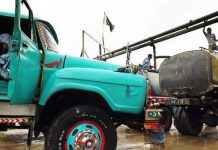Air Commodore Khalid Iqbal (Retd)
The World Bank (WB), International Monetary Fund (IMF), and Asian Development Bank (ADB) released back-to-back studies on Pakistan’s economy during the last month. There are glimmers of hope that the economy has somewhat recovered. In terms of immediate impact on the domestic market, the core inflation has dipped to 15.6 % and commodity prices increase have fallen from 38% to 17.3%; these are the two years’ lowest figures. However, all three reports point to the necessity of bitter pills over the next two to three years.
The ADB projects that GDP might increase by 1.9% in 2024 and 2.8% in 2025. “Pakistan’s economy is showing signs of a gradual recovery supported by higher crop output and improvement in manufacturing,” stated Yong Ye, the Country Director of ADB for Pakistan. According to the IMF assessment, Pakistan’s GDP growth rate could jack up to 3.5% and inflation could come down to 12.7% in the next fiscal year. Pakistan’s budget deficit will be around 7.3% of GDP, which is alarming. According to the IMF Managing Director Kristalina Georgieva, there are “very important issues” in Pakistan that need to be resolved, “including the tax base, the way the wealthier segment of society contributed to the economy, the direction of public spending, and fostering greater transparency”. The WB report entitled “Pakistan Development Update: Fiscal Impact of Federal State-Owned Enterprises” states that only 1.8% growth in the country’s GDP is anticipated in the current fiscal year. The report draws attention to the significant costs associated with loss-making state-owned companies (SOEs) and the urgency of crucial reforms, such as privatisation.
During this economic squeeze, leading international financial institutions and several friendly countries have generously extended a helping hand to facilitate an early recovery. The US State Department Spokesperson Matthew Miller said, “Pakistan has made progress to stabilise its economy, and we support its efforts to manage its daunting debt burden.” Our foreign exchange reserves are getting close to US $10billion. The 24th long-term IMF bailout of US$8 billion is being negotiated. The credit ratings have begun to improve. Money has started flowing in from here and there, to assist the continuation of some of the massive projects essential for strengthening the economy in the long-term. The WB has approved a US$1 billion facility for the Dasu dam and a US$ 3 million grant for structural competitiveness changes.
This journey to even this modest level of stability was difficult given the high inflation, fluctuation in oil and gas prices in the international market, diminishing foreign exchange reserves, and an imminent sovereign default. Though one could have a sigh of relief, there is no room for complacency.
Put together, one could say that though some of the economic indicators may have stopped from further slipping into the negative side of projections, their gains on the positive side of the graph are fragile and they could be easily reversed. We should remain mindful that the economy is barely afloat, and the cushion even for routine shocks, like floods or poor crops, is rather thin. Even if there is a single such shock, an additional 10 million people could slide down below the poverty threshold.
For prudent handling of our fragile economy in the prevalent global and regional geopolitical environment, a bold course correction may be overdue. We need to ponder over the ways to break out of this addictive vicious cycle. Indeed it is time for self-reflection. There is a need for fresh perspectives to address longstanding issues.
For decades, we have disregarded the well-established fundamentals of the prudent management of the economy. We represent a classic case study of a nation addicted to living beyond its means. According to Prime Minister Mr Shehbaz Sharif, our debt trap has become a ‘death trap’. There is a need to go back to the drawing board to work out a consensus-based long-term (20-30 years) national vision for the management of the economy, specifying monitoring and course correction benchmarks on five yearly basis. An all-out effort is required to enhance investor confidence, cut down energy and labour costs, and curtail the import of luxury items. The export sector needs invigoration by ensuring ease of business, competitiveness, production and quality enhancement, and aggressive marketing.
Seeking another IMF programme is akin to admitting failure at the policy level, however, at this point and time, it may be unavoidable. Piling up another US$ 8 billion loan from the IMF over the next 6-8 years is not a moment of joy, it is a compulsion like taking a medicine with serious side effects, where there could be a possibility that the solution could be worse than the problem we seek to cure.
It is refreshing that the government has begun to take various steps to re-rail the economy. Twenty four loss-making SOEs have been shortlisted for fast-track privatisation. Digitisation of the Federal Board of Revenue (FBR) is being vigorously pursued, and its completion is likely to contribute significantly towards the expansion of the tax net. Investor confidence is being enhanced through various incentives. The UAE, Saudi Arabia, and China have also committed to project-based investment. We are indeed on the right track, and if we continue with due perseverance, the cherished goal of a fairly stable national economy may be achieved in 3-5 years.
Air Commodore Khalid Iqbal (Retd) is Director at the Centre for Aerospace and Security Studies (CASS), Lahore Pakistan. He may be reached at [email protected]

















